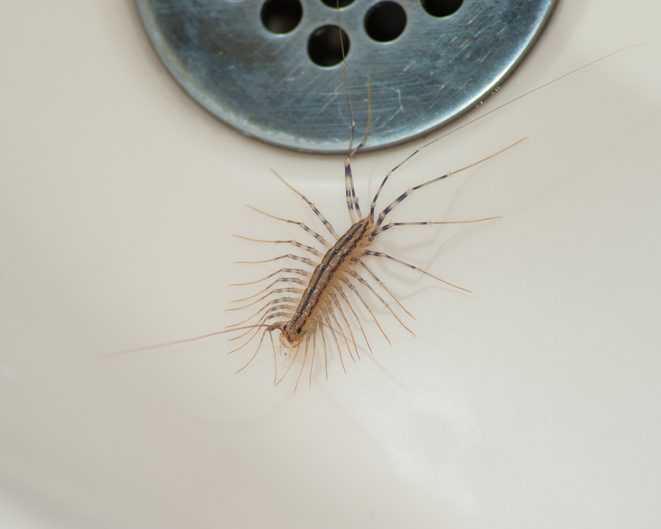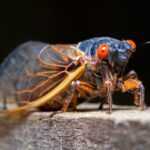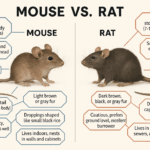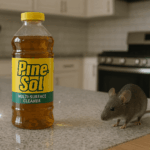A wide range of pests thrive in Washington’s mild, humid climate. One particularly unnerving pest in the Evergreen State is the centipede. From their tendency to bite to their unpleasant appearance, centipedes are a common menace in the Northwest U.S. They can also be difficult to differentiate from other household pests with many legs.
The similarities between centipedes and other pests often leave Washington homeowners wondering what a centipede actually looks like and how they’re different from their lookalikes.
If you’ve ever wondered how to spot a centipede or you’d like to figure out what other unusual bugs with many legs may have found their way into your home, we have the answers you need. Learn more about centipedes, insects that look like centipedes, and how our professional pest control experts can help you get rid of them.
What is a centipede?
It’s easy to assume centipedes are insects, but they are actually classified as arthropods. Centipedes’ unusual appearance makes them easy to identify. They have long, flattened bodies, typically divided into 15 body segments. Each body segment features a pair of legs, which makes centipedes the definition of creepy crawlers. While the word “centipede” means “one hundred feet,” centipedes can have as few as 30 legs or as many as 300.
While centipedes prefer the outdoors, their predatory nature often leads them into homes to hunt spiders, silverfish, and other pests. You’ll likely spot one in the dark, damp areas of your home, such as your bathrooms or basement.
While more than 8,000 centipede species exist all over the world, only three main species reside in Washington, including:
- House centipede
- Bark centipede
- Cryptopid centipede
House Centipede
House centipedes are yellowish-brown, are roughly an inch in length, and have 15 pairs of legs. They are adept hunters that dart around Washington homes feeding on smaller pests, such as cockroaches.
Bark Centipede
Reddish-brown in appearance with yellow legs, bark centipedes are large and aggressive hunters armed with a venom-filled fang. They live in wooded areas but often venture into homes in search of prey. Bark centipedes may bite people if they are surprised or feel threatened.
Cryptopid Centipede
True to their name, cryptopid centipedes are strange-looking creatures that creep under logs, stones, and other natural areas to feed on insects. They are brownish-red and have large pincers to grasp their prey better. Unfortunately, they may use them on unsuspecting homeowners that wander into garages, basements, or mudrooms without the proper footwear.
Pests That Resemble Centipedes
Unfortunately, centipedes aren’t the only unsettling critters with many legs invading your Washington home. In fact, they have many doppelgängers capable of pestering you and your loved ones as they search for food and shelter. Three common pests often confused with centipedes are:
- Millipedes
- Silverfish
- Earwigs
Millipedes
“Millipede,” meaning “thousand feet” in Latin, is the name of centipedes’ most well-known lookalike. Similarly to centipedes, millipedes have segmented bodies with many legs. However, millipedes have two pairs of legs for each body segment, rather than just one.
They also move slowly and curl up when in danger, rather than hunt or attack like centipedes. Millipedes feed on decaying wood, leaves, and other organic material. Some may occasionally wander into your home, but millipedes primarily live in gardens, the woods, and other outdoor areas. Do not touch these pests, as they may secrete defensive liquids or sprays that irritate human skin.
Silverfish
Silverfish are typically silver or brownish-yellow with six legs and long antennae. Like centipedes, silverfish are attracted to damp, humid environments. These scuttling pests may not pose major health or safety threats, but they can cause property damage. They feed on items full of starch and protein, such as produce, clothing fibers, pet food, and even the glue used for bookbinding.
Earwigs
Contrary to popular belief, earwigs do not crawl into people’s ears while they’re sleeping. They do, however, thrive in moist, dark areas, such as underneath sinks or in leaky basements.
Earwigs are dark brown insects with small wings on their back, which they use to fly short distances. Additionally, they have pincers at the end of their abdomens. When threatened, these pests may bite or use their pincers to defend themselves.
How to Avoid Centipedes and Similar Pests
Prevent centipedes and other many-legged pests from invading your home by removing any potential food sources. If you have an existing pest problem, for example, get rid of it quickly with the help of professionals. Additionally, limit their access to food. Block any potential points of entry into your home by sealing cracks, holes, and spaces around your doors or windows.
Schedule an inspection with PURCOR, and let our team identify areas of your home that may be vulnerable to centipedes.
Use a dehumidifier as well in your basement to decrease moisture levels and remove any pest-hiding clutter throughout your home. Common clutter that pests hide under include:
- Dirty laundry on the floor
- Discarded newspaper and mail
- Stacks of books
- Food wrappers
What issues can centipedes cause?
Centipedes don’t spread disease like cockroaches or gnaw through drywall like rodents, but they shouldn’t be welcome in your home. These scuttling creatures are venomous and can bite or pinch with their pincers if they’re provoked. Additionally, the presence of centipedes in your home may indicate the presence of worse pest-related problems. They feed on several concerning pests, including:
- Termites
- Flies
- Spiders
- Cockroaches
- And more
If you’ve noticed a significant number of centipedes in or around your property, contact PURCOR. You may have a more serious pest issue brewing beneath your feet.
Schedule a Service Appointment with PURCOR Today
Centipedes and their lookalikes may not pose a direct threat to you and your home, but any pest infestation is difficult to handle without tools, knowledge, and experience. Save yourself the headache of do-it-yourself solutions. Hire pest professionals to get the job done for you.
PURCOR’s pest specialists are highly trained to utilize environmentally friendly products not only to remove your problem but prevent it from occurring again. From home to business pest control services, let PURCOR safeguard your property. Have an issue with centipedes or other pests with many legs? Contact us today to receive a free quote for our innovative pest control services!
"*" indicates required fields
"*" indicates required fields




